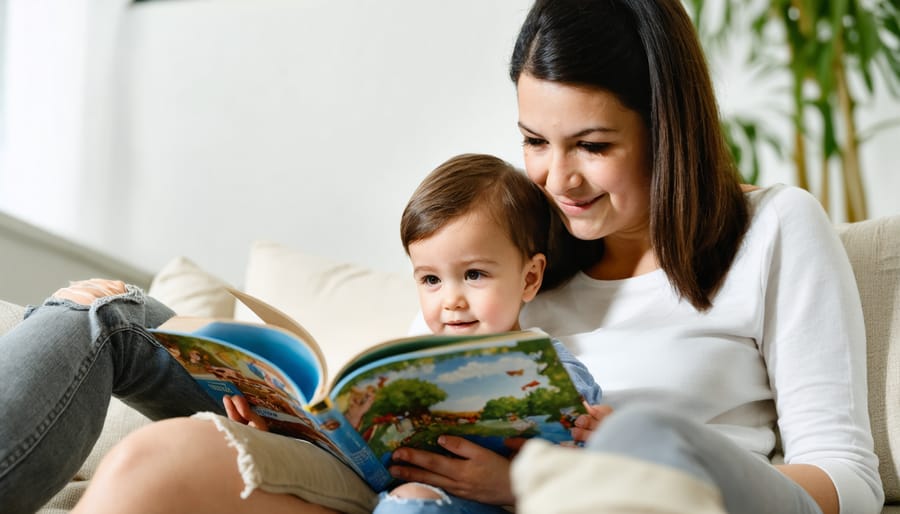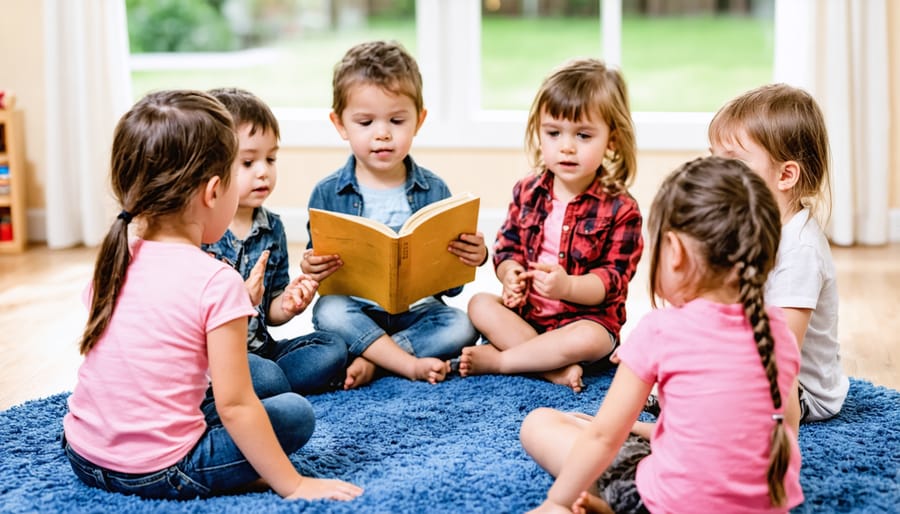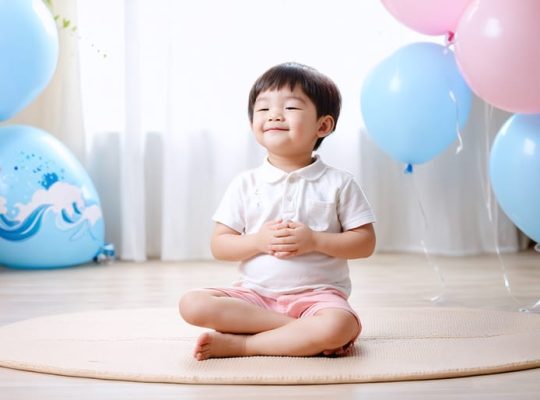Imagine teaching a child to pause and breathe deeply before reacting to a challenging situation. This simple yet powerful practice exemplifies how mindful storytelling and conscious awareness can transform young minds. The nine mindfulness attitudes serve as gentle guides, helping children navigate their emotional landscape while building resilience and self-awareness.
These fundamental principles – from non-judging to patience, from trust to acceptance – create a framework that supports emotional growth and mental well-being in children. When woven into daily routines and stories, these attitudes help young minds develop a deeper understanding of themselves and their place in the world.
Parents and educators who incorporate these mindfulness attitudes into their teaching approach often witness remarkable transformations: increased emotional regulation, better focus, and stronger interpersonal relationships. By understanding and practicing these nine attitudes, we create safe spaces where children feel empowered to explore their feelings, express themselves authentically, and develop lasting emotional intelligence skills.
Let’s explore how these mindfulness attitudes can be naturally integrated into children’s daily lives through engaging stories, playful activities, and meaningful conversations.
The Power of Mindful Storytelling in Child Development
When children engage with stories through a mindful lens, they discover a unique sanctuary for processing their emotions and experiences. Mindful storytelling creates a gentle bridge between their inner world and outer expression, allowing them to explore feelings in a safe, non-judgmental space.
Through storytelling, children naturally practice several key mindfulness skills. They learn to focus their attention, visualize scenarios, and connect with different characters’ perspectives. This process helps them develop emotional intelligence and empathy, as they begin to recognize and understand various emotional states through the characters’ journeys.
Parents and educators can enhance this experience by encouraging children to pause during storytelling, taking moments to notice their own feelings and bodily sensations as the story unfolds. Simple questions like “How does your body feel when the character is scared?” or “What do you think the character needs right now?” help children develop emotional awareness and self-reflection skills.
Creating stories together adds another powerful dimension to mindful storytelling. When children become co-creators, they gain agency in expressing their emotions and experiences. This collaborative process helps them feel heard and validated while building confidence in their ability to navigate complex feelings.
Dr. Sarah Thompson, a child psychologist, notes: “When we combine mindfulness with storytelling, we’re giving children tools to understand themselves better. Stories become mirrors where they can safely explore their emotions and learn healthy coping strategies.”
Remember that mindful storytelling doesn’t require elaborate tales or perfect execution. Simple, everyday stories shared with presence and attention can create meaningful opportunities for emotional growth and connection with your child.


The 9 Mindfulness Attitudes in Child-Friendly Stories
Non-Judging Through Character Perspectives
Stories offer a powerful way to help children understand non-judgment through different characters’ perspectives. Consider reading books where characters initially make assumptions about others, only to learn valuable lessons about acceptance. For example, share the tale of a young rabbit who thinks a bear looks scary, but later discovers they share a love of painting and become close friends.
Create simple roleplaying scenarios where children can step into different characters’ shoes. This helps them understand that everyone has unique experiences and reasons for their behaviors. You might act out a situation where two friends have different ways of solving a puzzle, emphasizing that neither approach is “wrong” – they’re just different.
Encourage children to imagine stories from multiple viewpoints. When conflicts arise, guide them to consider how each person might be feeling and thinking. This practice helps develop empathy and reduces the tendency to make quick judgments about others’ actions or choices.
Remember to validate children’s observations while gently challenging their assumptions. This balance helps them develop both awareness and acceptance.
Patience in Story Pacing
In our fast-paced world, children often struggle with the concept of waiting and letting stories unfold naturally. Teaching patience through storytelling helps young minds understand that emotions and experiences need time to develop. When reading together, encourage your child to pause and reflect rather than rushing to the next page. Try incorporating mindful breathing techniques during these pauses to enhance the experience.
Create moments of anticipation by asking, “What do you think might happen next?” or “How do you think the character is feeling right now?” These questions help children develop emotional awareness while practicing patience. Remember, it’s okay to sit with uncertainty and let the story’s natural rhythm guide the experience.
When children show signs of impatience, gently remind them that like their favorite stories, their own emotions and experiences need time to unfold. This patient approach helps build emotional resilience and deeper understanding of both stories and themselves.
Beginner’s Mind in New Adventures
Imagine a child opening a new book for the first time – their eyes wide with wonder, their mind free from preconceptions. This is the essence of beginner’s mind, a powerful mindfulness attitude that encourages us to approach each moment with fresh curiosity and openness.
When we embrace beginner’s mind, we let go of what we think we know and become open to new possibilities. Think of it as putting on magical glasses that help us see familiar things in completely new ways. A simple walk in the park becomes an expedition of discovery, where every leaf, cloud, and butterfly holds a fascinating story waiting to be uncovered.
Parents and educators can nurture this attitude by asking open-ended questions: “What do you notice?” “What does this remind you of?” “What might happen next?” These questions invite children to explore their experiences without judgment or expectations, fostering both creativity and emotional awareness.
By maintaining beginner’s mind, we help children stay curious, adaptable, and excited about learning – qualities that serve them well throughout their lives.
Trust in Self-Expression
Every child has a unique story to tell, and fostering trust in their self-expression is crucial for emotional development. When children feel confident sharing their thoughts and feelings, they develop a stronger sense of self-awareness and emotional intelligence. Encourage your child to express themselves through various creative outlets, whether it’s drawing, storytelling, or simply talking about their day.
Create a safe space where children feel heard without judgment. When they share their experiences, respond with genuine interest and empathy. This helps them understand that their feelings and perspectives matter. Remember that self-expression doesn’t always need to be verbal – some children might prefer expressing themselves through movement, art, or play.
Help children recognize that their personal narrative is valuable and that there’s no “right” or “wrong” way to express their emotions. This acceptance builds confidence and encourages them to continue exploring their inner world through mindful self-expression.
Non-Striving Through Story Flow
Children often feel pressured to achieve specific outcomes, which can create unnecessary stress and anxiety. Non-striving through story flow teaches them to simply be present in the moment without forcing results. When reading together, encourage your child to immerse themselves in the story without worrying about what happens next or rushing to reach the end.
Think of it like floating down a gentle stream – there’s no need to paddle or direct the flow. Let the story carry both you and your child naturally. Ask open-ended questions about how the characters might be feeling or what they notice in the illustrations, but avoid pushing for “right” answers.
This approach helps children understand that sometimes the journey matters more than the destination. When they learn to engage with stories without attachment to outcomes, they develop a more relaxed and accepting mindset that extends beyond storytime into other areas of their lives.
Practice this by occasionally pausing during reading to take calming breaths together and simply appreciate being present in the shared experience.
Acceptance in Character Challenges
When children encounter challenging characters in stories, they can learn valuable lessons about acceptance. By discussing how story characters handle difficult emotions or situations, children develop a deeper understanding of their own feelings. For example, when reading about a character who feels angry or disappointed, encourage children to notice how the character accepts these emotions without trying to push them away.
Create opportunities for children to relate to characters’ experiences. Ask questions like “How do you think the character feels right now?” or “What would you do in their situation?” This helps children recognize that all emotions are valid and natural responses to life’s challenges.
Through storytelling, children learn that accepting feelings doesn’t mean giving up or giving in. Instead, it means acknowledging emotions as they arise, just like their favorite characters do. This approach helps children develop emotional resilience and self-compassion while making the concept of acceptance more tangible and relatable through familiar stories and beloved characters.
Letting Go Through Story Resolution
Stories have a unique power to help children process and release difficult emotions. When children struggle with big feelings, guiding them to create or complete a story can provide a gentle path to emotional resolution. This narrative approach allows them to explore their feelings through characters and situations while maintaining a safe emotional distance.
Just as we can find calm through breathing, we can find peace through storytelling. Encourage children to imagine how their story’s characters might overcome challenges similar to their own. Whether it’s a worried bear finding courage or an angry dragon learning to cool down, these narrative conclusions help children visualize positive outcomes.
The key is allowing children to guide the story’s resolution naturally. This process helps them practice letting go of difficult emotions while building confidence in their ability to navigate future challenges. As they create endings that feel satisfying, they’re actually developing valuable emotional regulation skills.
Gratitude in Story Moments
Storytelling provides a wonderful opportunity to cultivate gratitude in children. When sharing stories, encourage little ones to notice and appreciate the positive moments, no matter how small. For example, while reading a bedtime story, pause to acknowledge when characters help each other or show kindness. Ask your child what they feel thankful for in the story.
You can also create gratitude-focused stories together. Start with “Once upon a time, there was a child who noticed three wonderful things each day…” Let your child fill in the details with their own experiences of gratitude. This practice helps children develop a habit of recognizing and expressing appreciation.
During story time, model gratitude by sharing your own observations: “I’m thankful the little bear had such caring friends” or “Isn’t it wonderful how the rain helped the garden grow?” These gentle prompts help children naturally integrate gratitude into their storytelling and daily lives, making mindfulness feel like a natural part of their narrative world.
Generosity in Shared Stories
Sharing stories creates a powerful space for children to explore and understand emotions together. When children collaborate on storytelling, they naturally practice empathy by considering different perspectives and emotional experiences. Encourage kids to create stories in pairs or small groups, taking turns to add elements and express how characters might feel in various situations. This collaborative approach helps children recognize that emotions are universal experiences we all share. As they build narratives together, they learn to listen actively, validate others’ feelings, and develop a deeper understanding of emotional complexity. Parents and teachers can guide this process by asking gentle questions about characters’ feelings and motivating children to explore different emotional outcomes in their stories. This shared creative experience builds emotional vocabulary and strengthens social bonds while making emotional learning engaging and fun.

Practical Tips for Parents and Teachers
Implementing mindfulness attitudes through storytelling techniques can be both fun and meaningful when you have the right approach. Here are some practical ways to bring these concepts to life:
Start with short, focused sessions of 5-10 minutes. Choose a quiet time when children are naturally calmer, such as after breakfast or before bedtime. Create a dedicated “story corner” with comfortable cushions and minimal distractions.
Use simple props to enhance engagement. A special “mindfulness bell,” stuffed animals, or nature items can help children connect with the stories. Let children hold these objects while listening or telling stories to ground their attention.
Incorporate breathing exercises naturally into stories. For example, when a character faces a challenge, pause to take three deep breaths together. This helps children associate breathing with emotional regulation.
Make it interactive by asking open-ended questions: “How do you think the character feels?” or “What would you do in this situation?” This encourages children to reflect on their own experiences and emotions.
Practice active listening by modeling it yourself. Show genuine interest in children’s responses and validate their feelings. When children share their own stories, maintain eye contact and offer encouraging non-verbal cues.
Create routine transitions using mindfulness moments. Before starting a new activity, take a moment to center attention with a brief story or breathing exercise. This helps children develop awareness of moving between different states of mind.
Remember to be patient and consistent. Some days, children may be more receptive than others. Celebrate small victories and maintain a gentle, non-judgmental approach. The goal is to make mindfulness feel natural and enjoyable rather than forced.
Keep a journal of successful stories and activities. Note which approaches work best with different age groups or personalities. This helps you refine your techniques over time and build a valuable resource library.
Embracing these nine mindfulness attitudes can transform how we approach daily challenges and interact with our children. By modeling these principles, we create a nurturing environment that supports emotional growth and resilience. Remember, implementing mindfulness is a journey, not a destination – start small and be patient with yourself and your children.
When we practice these attitudes consistently, we notice profound changes: reduced stress levels, improved communication, stronger family bonds, and enhanced emotional awareness. Children learn to respond thoughtfully rather than react impulsively, developing skills that will serve them throughout their lives.
Begin by choosing one attitude that resonates most with you and your family. Perhaps start with beginner’s mind or patience, incorporating it into your daily routines. As you become comfortable, gradually introduce other attitudes. Share your experiences with other parents, teachers, or caregivers – building a supportive community enhances everyone’s mindfulness journey.
The beauty of mindfulness lies in its simplicity and accessibility. These attitudes don’t require special equipment or extensive training – just an open heart and willingness to practice. Your commitment to mindfulness today plants seeds of emotional intelligence that will bloom for years to come.





